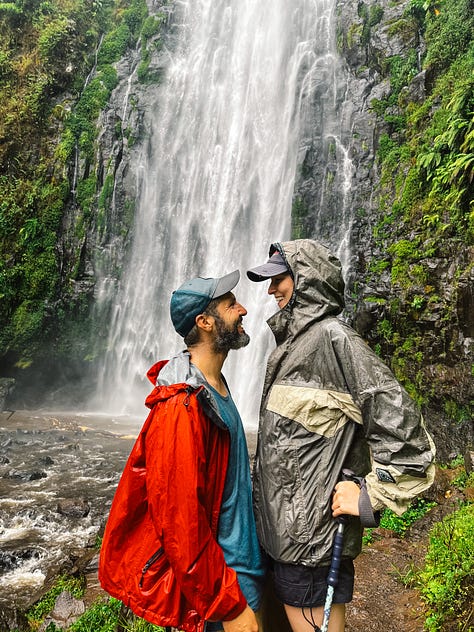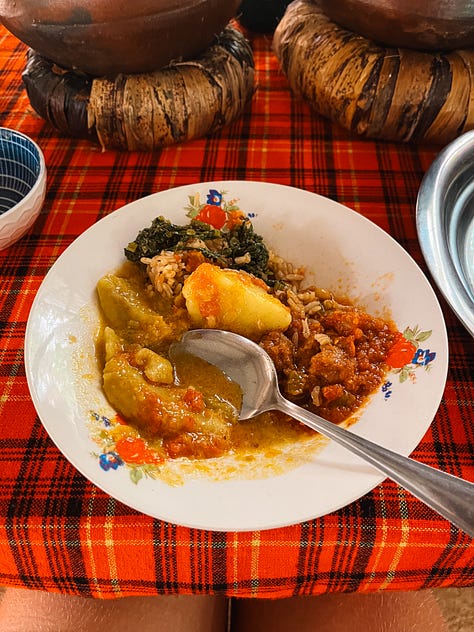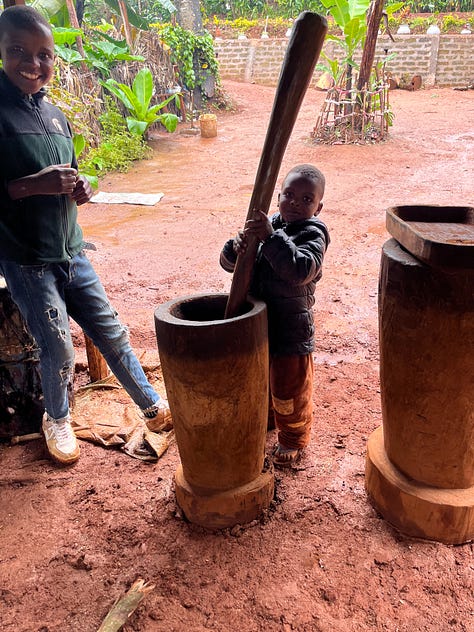I bet when you think of Tanzania there are three places that immediately come to mind - Kilimanjaro, Zanzibar, and the Serengeti. You’re probably not alone, and they’re famous for good reason. But there is SO much more to Tanzania as soon as you go off the beaten track. Did you know that one of the most important paleoanthropological locations in the world, proven invaluable in our understanding of early human evolution, is in Tanzania? Did you know you can see 3.6 million year old human footprints that have solidified in volcanic ash? Did you know that there are other fantastic mountains you can climb, other than Kili? Traveling through Tanzania by car meant that we could explore the unknown side of this vast country - and it really is vast. Fun fact: there is a national park in Tanzania that is bigger than actual Switzerland.





We crossed the Kenyan border into Tanzania at Taveta border post, specifically because it’s small, remote, and less likely to be frequented by trucks. While definitely low key, it made it all the more random that the only other Mzungu at the border were a couple who live in Männedorf am Zürichsee - our home village in Swizzles. Small world eh! After a quick and uneventful crossing we made our way to Moshi, in the Kilimanjaro region, home to the Chagga people. Moshi is the home of mountaineering, the gateway to Kilimanjaro National Park, and the starting point for the hikers who summit the mountain. Moshi also happens to be the centre of coffee production in Tanzania, and the city is full of lively cafes and a strong coffee culture. As well as visiting many of the cafes in the town, we also visited a coffee farm in Materuni, on the slopes of Kilimanjaro. We couldn’t have chosen a wetter day for hiking to the farm, but it was worth it. We passed an amazing waterfall along the way, and spent time with the owners of the coffee farm, who showed us the whole process of roasting, grinding, and cooking in the traditional way. Everyone in Materuni drinks coffee, including even the 5 year old children - quite a jarring sight to see them knocking back cups of extremely strong coffee… After warming up with delicious coffee, and almost adopting a puppy during my caffeine high/moment of weakness, we ate probably one of the best meals we had in Tanzania, cooked by the women in Materuni village.





We spent around a week in Moshi, before heading for Arusha, the gateway to Tanzania’s famous national parks, The Serengeti and Ngorongoro, and home to the country’s second highest peak, Mount Meru (4,562m). Since we were neither summiting Meru, nor forking out the guts of $2k to visit the national parks, we didn’t stick around for long. Our goal was Mount Hanang, 250km south-west of Arusha, the third highest peak in Tanzania at 3,423m. Hanang is not a popular mountain to climb, and there’s only one guide from the area that offers the guided overnight trip up the dormant volcano, as opposed to a few other guides who only offer the brutal single-day hike. Mount Hanang is arguably the hardest mountain climb in Tanzania, due to the trek’s elevation gain - 1,600m in one day and almost 9km. We arrived at our guide Tom’s house at 9AM for some coffee and chapatis - his wife does the best chapati in Tanzania, without a doubt. We borrowed warm jackets from Tom, in anticipation of a cold night on the mountain, and packed up everything we would need including the tent, food, and extra clothes, and set off around 10AM. The first part of the climb was to the campsite, which stands at 3090m, and then the second part of the climb is to the actual summit. After a long day of climbing we reached the summit at 5PM, and it was at that point that I started to feel how tired and wobbly my legs were - of course there wasn’t a bother on the Swiss mountain goat…





After a quick feast of oat cookies and dates on the summit, we started to make our way down to the campsite - a 2h up and down trek on already tired legs, with wind, fog, low temperatures, and a darkening sky - the campfire was calling my name. We arrived at the campsite around 7PM, and ate the most delicious dinner in front of the fire - a beef pilau cooked by Tom’s wife Lucy. I cannot describe how delicious that meal was, and after washing it down with some Jameson whisky, we headed to the tent for a cold night’s sleep… Worth it!








It’s worth mentioning that a mere two weeks after we were on Hanang, the area around the mountain (Katesh) was hit by catastrophic flooding after heavy rains. Mudslides came down the side of Hanang, submerging the village below. Not only did parts of the mountain fall away, but many people lost their lives (89), homes, animals, crops, and livelihoods. Telecommunication networks were down in the area for over a week, and we were quite worried when we didn’t hear back from Tom after we had reached out to check in on his family and the rest of our Hanang gang. Thankfully everyone was fine, but Tom did say that the village had a huge clean up and recovery ahead of it. See for yourselves here.
That’s all for now! Stay tuned for part 2 of our two month drive around Tanzania…
Thanks for reading Postcards from Africa - we really enjoy sharing our adventure with you. Don’t forget to subscribe, if you haven’t already!






